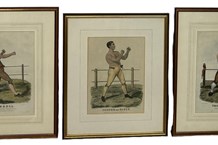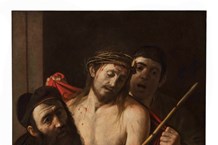Part of his Lieder collection, it is a poem that has been set to music by a number of composers, but though Goethe himself prefered the initial settings by Zelter, whose music, he told the composer, was an inspiration to him, others have found greater delight in the later settings of such as Beethoven, Schubert and Wolff.
It may seem strange today to think that Zelter, now almost entirely forgotten, should be preferred to Schubert, but at the time the great song man’s music was not widely known or performed outside his own circle of friends, and Schubert was once famously rebuffed by Goethe. A letter sent to the poet by one of Schubert’s friends, asking if he would accept the dedication of a series of songs that Schubert had set to his poems, was left unanswered – a familiar practice with Goethe, who received many such requests – and the volume of Schubert’s songs were returned without comment.
A letter of introduction and recommendation addressed in November 1574 by Martin Luther to two bailiffs of the Meissen district, whom he hopes will be able to help a preacher by the name of Baltzer, was sold at £14,000. Signed “Mart. Luther D.”, this letter was once in the autograph album of the 19th century English composer, William Sterndale Bennett.
Sold at a much higher than predicted £24,000 to a private buyer, was a letter sent in July 1818 by Simon Bolivar to Guillermo White – a letter in which he announces that war between the United States and Spain will complete their struggle for independence from Spanish rule.
Found in Napoleon’s carriage when it was seized by a Prussian major following the Battle of Waterloo was a fine linen shirt with a discreet imperial N surmounted by a crown embroidered in tiny red cross-stitch in the vicinity of the right thigh. The carriage itself was exhibited in London in 1816, drawing enormous and curious crowds, and was later housed at Madame Tussauds (where it was destroyed by fire in 1925), but the shirt made its first auction appearance at Debenham Storr & Sons in 1862.
At Sotheby’s it was entered for sale by Rudolph Moshammer, the flamboyant owner of an exclusive men’s fashion store in Munich, a writer and TV talkshow regular who also devotes much time and energy to caring for the homeless. The shirt, which found an anonymous buyer at £34,000, was sold to benefit a charity set up by Moshammer to help the homeless of Munich.
Anoraks may wish to know that an inventory of Napoleon’s wardrobe made in 1811 lists nine dozen shirts. These were supposed to have a wearing/working life of six years, but four dozen were lost during the retreat from Moscow, according to the Sotheby’s cataloguer, who then goes on to report that by the time of his exile to St. Helena there were still 87 in the cupboard. The numbers don’t add up, but we are told that six of these remaining 87 shirts were bequeathed by Napoleon to his son and his three executors received 27 shirts each. Earlier this year a near identical shirt sold for €63,000 (£40,645) in a provincial French sale.
Goethe’s Longing and Napoleon’s lost linen
TOP LOT in this comparatively modest sale of Continental books and manuscripts at Sothebys on June 11, at £52,000 to a European dealer, was an autograph manuscript of one of Goethe’s more celebrated poems, Sehnsucht, (Longing) dated to c.1802-03.




